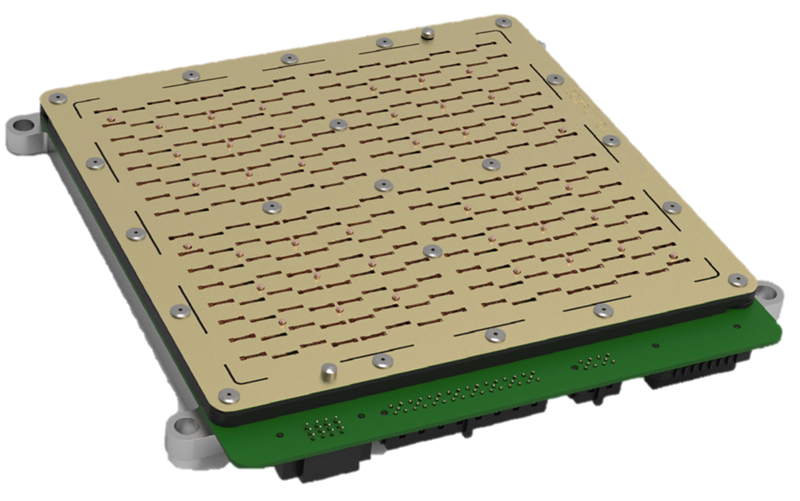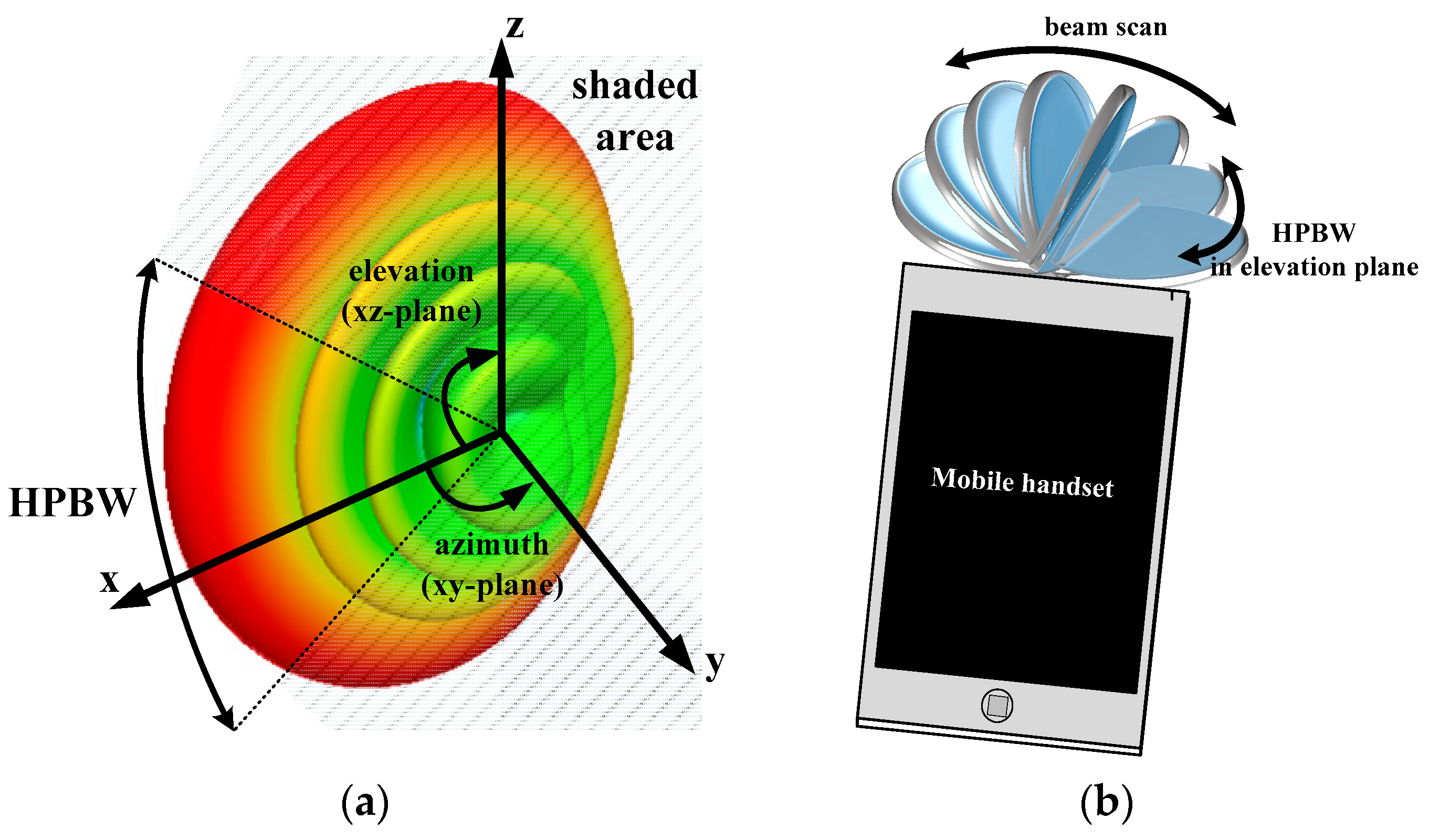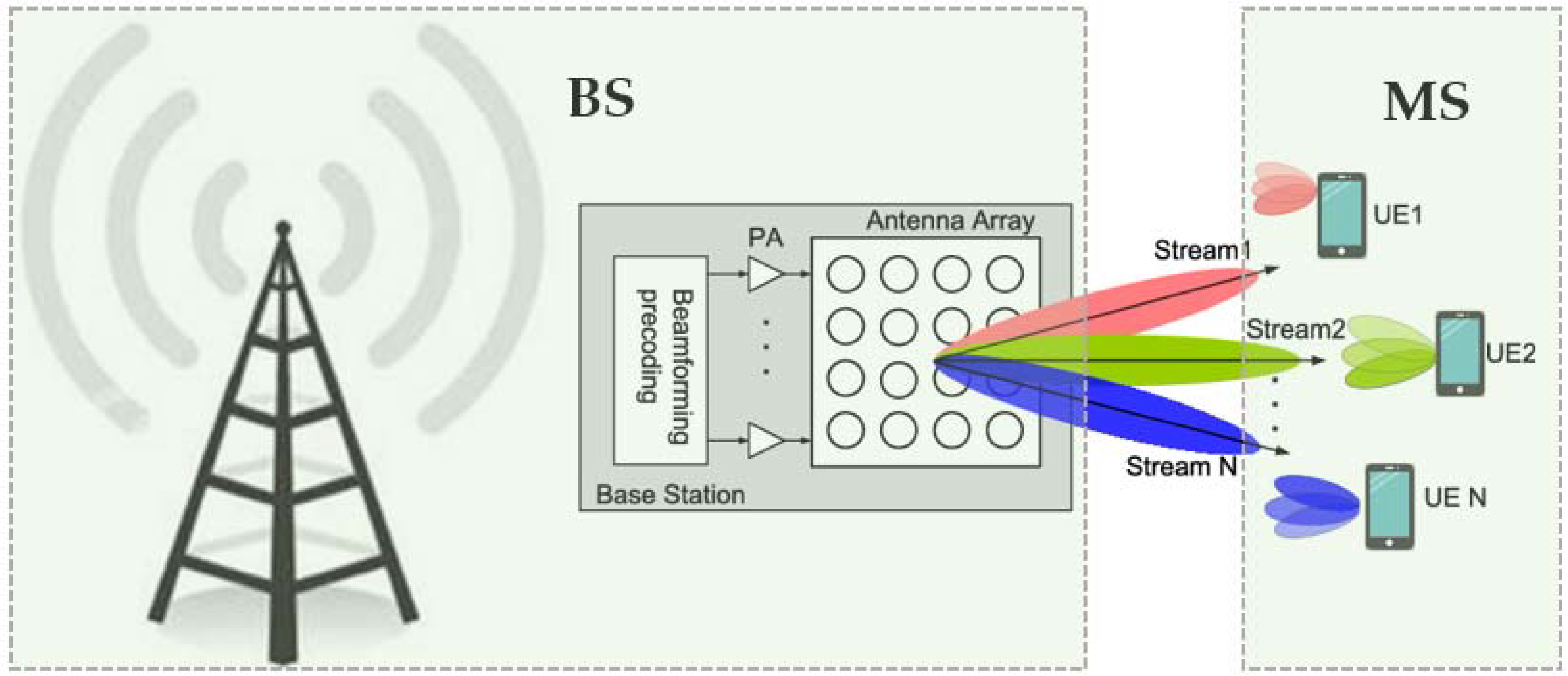Finally ITRIs developed 28GHz 5G millimeter-wave development and verification platform is introduced which adopts the hybrid beam-forming architecture designed with a 8163264-antenna phased antenna array for gNB andor UE to implement the beam-forming technology also a beam-tracking algorithm is developed to support the mobile transmission. Challenges and solutions of 5G millimeter wave The 5G millimeter wave has relatively limited coverage due to its high-frequency band high propagation loss weak diffraction and diffraction capabilities and this is the biggest challenge facing the 5G millimeter-wave communication system.

Challenges Grow For 5g Packages And Modules
Fast switching and settling times minimizing post-PA loss with regard to efficiency and thermal performance minimizing pre-LNA loss for an improved link budget space constraints in UE.

. Ozge Koymen senior director of technology at Qualcomm gave the 5G UE phased array design presentation and discussed challenges with that effort such as. Zhang 5G millimeter-wave antenna array. Furthermore other challenges for the implementation of mmw cellular networks for example blockage communication security hardware development and so on are discussed as are potential solutions.
Developments in beamforming RFICs as well as antenna materials and fabrication techniques has laid the ground work for the implementation of 2D phased arrays for use in a cellular environment. Zhang Jing Ge Xiaohu Li Qiang Guizani Mohsen Zhang Yanxia Journal. Beamforming in 5G mm-Wave antenna arrays Implementation of 5G mm-Wave technology requires a lot of significant changes in antenna design engineers work.
This paper presents an approach to design mmWave vehicular multi-antenna systems with beamforming. The following are two examples. 1 hour agoDesigning an ultra-wideband array antenna for fifth generation 5G is challenging for the antenna designing community because of the highly fragmented electromagnetic spectrum.
5G Millimeter-Wave Antenna Array. It resonates in a wide frequency range of 24194047 GHz covering n257n261 bands of 5G. There are many efforts around the world to improve mmWave antennas performance for 5G.
The feeding technique used in the proposed design is a proximity coupling technique to improve bandwidth performance. The array antennas in 5G communication applications face a lot of problems and challenges with the significant drawbacks of size and mutual coupling effects even though the future generation. As there has been an explosive increase in wireless data traffic mmw communication has become one of the most attractive techniques in the 5G mobile communications systems.
IEEE Wirel Commun 242106112 Google Scholar. IEEE Wirel Commun 242106112. Dixit et al.
Array antenna using a stepped line cut and U-slot combination for 5G millimeter-wave applications is proposed. Zhang J Ge X Li Q Guizani M Zhang Y. As a result many antenna arrays have been proposed during the.
Design and Challenges Author. To overcome bandwidth limitations several millimeter-wave bands for 5G and beyond applications are considered. 5G millimeter-wave antenna array.
Antennas for 5G applications make use of the shorter element sizes at high. Millimeter-wave bands are of increasing interest for the satellite industry and under discussion as potential 5G spectrum. Antennas fabricated with new.
A corporate feeding network is applied on the top layer of the Vivaldi array design to feed the elements. The two MIMO array configurations are spatially orthogonal to each other which results in. Antennas specification becomes more and more complicated.
Issues like path loss rain absorption conduction losses in metals substrate losses and changes in substrate properties are well-known contributors to antenna losses. Antenna Array Design Choices Characterization. Berry MV Lewis ZV Nye JF On the Weierstrass-Mandelbrot fractal function Proc R Soc Lond A Math Phys Sci 1980 370 1743 459 484 570931 043528008 Google Scholar.
The preview is over. Although mmw communication systems have been successfully applied to indoor scenarios various external factors in an. As in the case of past developments of radio technologies we find very fast growth of 5G during its mere 40-year journey from 1G to 5G.
The scope of this Special Issue focuses on technical topics in mmWave antennas that may address but are not limited to the topics below. The proposed design of millimeter-wave mm-Wave array antenna package with beam steering characteristic for the fifth-generation 5G mobile applications has 10-dB gain in the upper spherical space good directivity and efficiency which is suitable for 5G mobile communications. Wideband and dual-band support high gain and wide coverage scanning capabilities and small size.
Antenna Array Design Choices Characterization White Paper. Some of the common challenges are lack of infrastructure research methodology and cost. An example of PCB layer assignment for a millimeter-wave array KHA1624C Array Antenna elements Multi-layer PCB RFICs Taoglas KHA1624C millimeter-wave array Elements on one side beamformers heat sink etc.
New antenna structures MIMO massive-MIMO beamformingbeam steering adaptive array and array with reconfigurable feed network. 5G NR millimeter wave systems are being implemented for commercial applications and show both the promise and challenges of 5G high data rate applications. In this article the issues involved in the design of antenna array architecture for future 5G mmw systems in which the antenna elements can be deployed in the shapes of a.
On the opposite side Figure 5. To sustain with this extensive global challenges use of antenna array is essential at the base station and cell site which will overcome the problems of large size hardware constraints and path loss because of very small wavelength associated with it. Millimeter-wave mmWave connectivity represents a paramount research field in which adequate geometries of antenna arrays must be provided to be integrated in modern vehicles so 5G-V2X can be fully exploited in the Frequency Range 2 FR2 band.
Introduce a new antipodal Vivaldi array antenna with a 1 4 arrangement proposed for 5G MM-Wave applications. 5G MILLIMETER-WAVE ANTENNA ARRAY. Proc R Soc Lond A Math Phys Sci 3701743 459484 1980 MathSciNet MATH Google Scholar.
The last mm-wave antenna design presented employs two MEMO arrays each composed of 22 antenna elements. 5G millimeter-wave antenna array. Taoglas KHA1624C millimeter-wave array Value Proposition from Taoglas.
IEEE Wireless Communications Issue Date. Zhang J Ge X Li Q Guizani M Zhang Y. Nye On the Weierstrass-Mandelbrot fractal function.
Array with new materials. Batch download VIEW PDF.

Pdf High Performance 5g Millimeter Wave Antenna Array For 37 40 Ghz Mobile Application

Pdf Multiband Millimeter Wave Antenna Array For 5g Communication

Ibm And Ericsson Announce 5g Mmwave Phase Array Antenna Module 2017 02 07 Microwave Journal

Mimo And Phased Array Antennas For 5g

Gapwaves Launches New 5g Mmwave Phased Array Antenna Gapwaves Ab
A Simplified Block Diagram Of A Large Scale Antenna Array Based Mmwave Download Scientific Diagram

Applied Sciences Free Full Text A 28 Ghz 5g Phased Array Antenna With Air Hole Slots For Beam Width Enhancement Html

Sensors Free Full Text Review Of Recent Phased Arrays For Millimeter Wave Wireless Communication Html
0 komentar
Posting Komentar